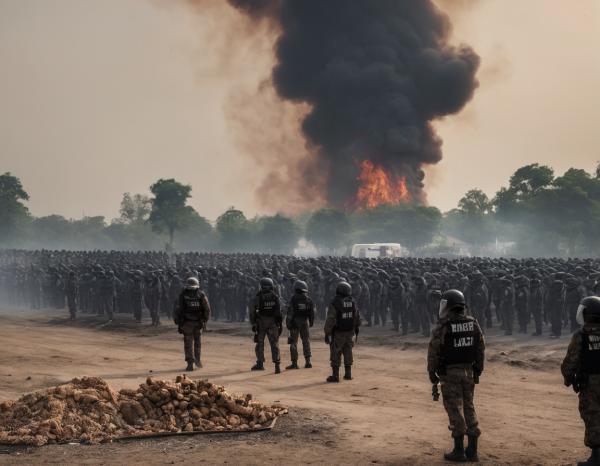Myanmar burns confiscated drugs worth around $300 million

Why This Can't Be News:
Alright, let's dive into this "International Day Against Drug Abuse and Illicit Trafficking" in Myanmarwhere they just burned nearly $300 million worth of drugs. Thats right, folks! While were all sitting here scrolling through TikTok, trying to figure out if that viral dance move can still be done without getting the plague, some serious drug lords are watching their entire net worth go up in smoke. Literally. Now, let me break this down for you: Myanmar just torched a massive pile of illegal narcoticsopium, heroin, methamphetamine (aka "ice" or crystal meth), and even ketamine (the horse tranquilizer thats somehow become the new party drug). Thats right, theyre burning enough drugs to make your average suburban mom blush at her next PTA meeting. And guess what? This isnt just some small-time operation; were talking about nearly $300 million worth of smack being reduced to ash. Thats more than the annual budget for some countries entire healthcare systems, folks! Talk about a fire sale. But heres where it gets juicy: this whole drug-burning spectacle comes on the heels of some pretty serious warnings from the UN. Theyre basically saying, "Hey, Myanmar? Your Golden Triangle region is now producing meth like it's going out of style." And by "style," I mean, like, a very tacky, glittery, and completely illegal style. The UN even labeled Myanmar as the worlds largest opium producer in 2023. So while theyre destroying all these drugs today, somewhere deep in the mountains, some meth lab is probably ramping up production to replenish their stockpiles. It's like burning a candle at both endsliterally and figuratively. What makes this whole situation even more absurd? Myanmars history with drug production. For decades, theyve been dealing with armed conflict, political instability, and economic insecurityall of which have basically turned their country into a meth superpower. The Eastern Shan State is ground zero for all this illegal activity because it's like the Wild West, but instead of outlaws robbing stagecoaches, you've got guys cooking up crystal meth in makeshift labs. And lets not forget: after the military takeover in 2021, things really went off the rails. Civil war? Check. Methamphetamine trade booming? Double-check. So, as we watch all these drugs go up in flames, its important to remember that this isnt just about Myanmar; its a global problem. Those drugs arent staying puttheyre flowing like a river of meth into East and Southeast Asia, and even South Asia (specifically Northeast India). It's like they're shipping out meth faster than Amazon ships those overpriced "one-star" products on Prime Day. In conclusion: while Myanmar is making a big show of burning all these drugs, its clear that the real problem lies in their inability to keep up with the demand for illegal substances. Meth labs are popping up like mushrooms after rain (which is fitting because meth and hallucinations often go hand in hand). So next time someone asks you why theres so much drug trafficking happening in Myanmar, just tell them: "Because they cant stop themselves from making it." #ThatsMethedUp P.S.: If youre thinking about getting into the meth business yourself, let me save you some trouble. Just remember: even if your lab is state-of-the-art and your product is top-notch, theres always a chance someone will burn all your hard work to the ground in front of cameras for an International Day Against Drug Abuse event. Talk about a bummer!
← Back to Stories


Comments
Comments (1)